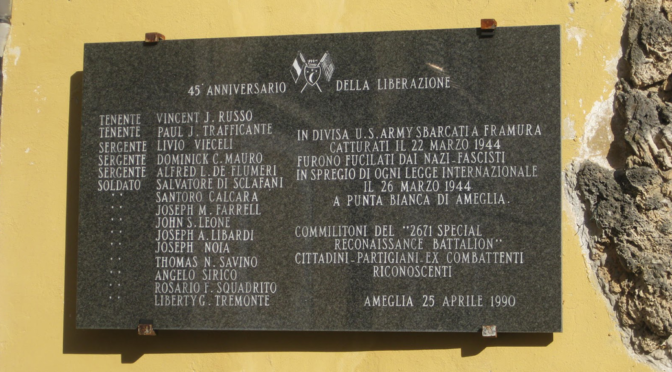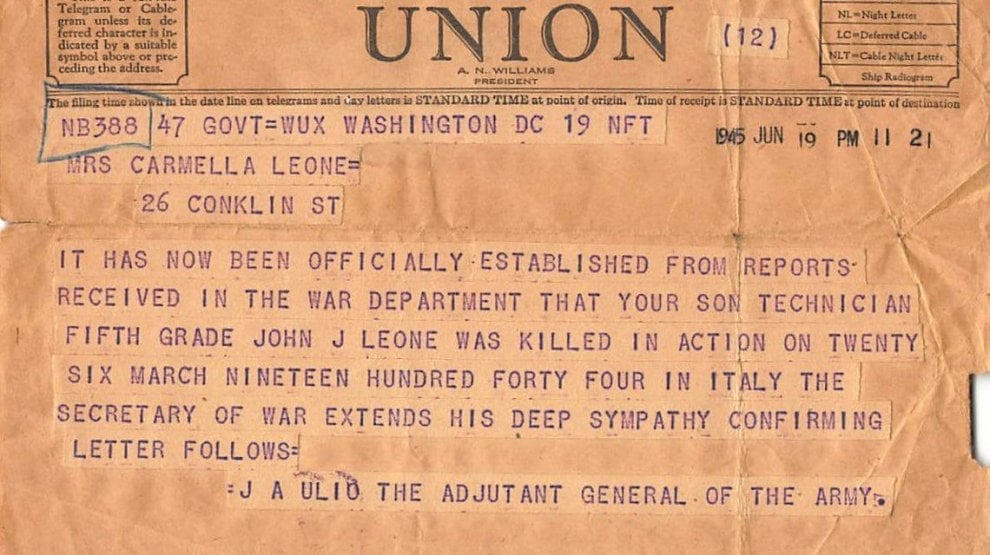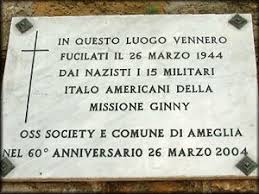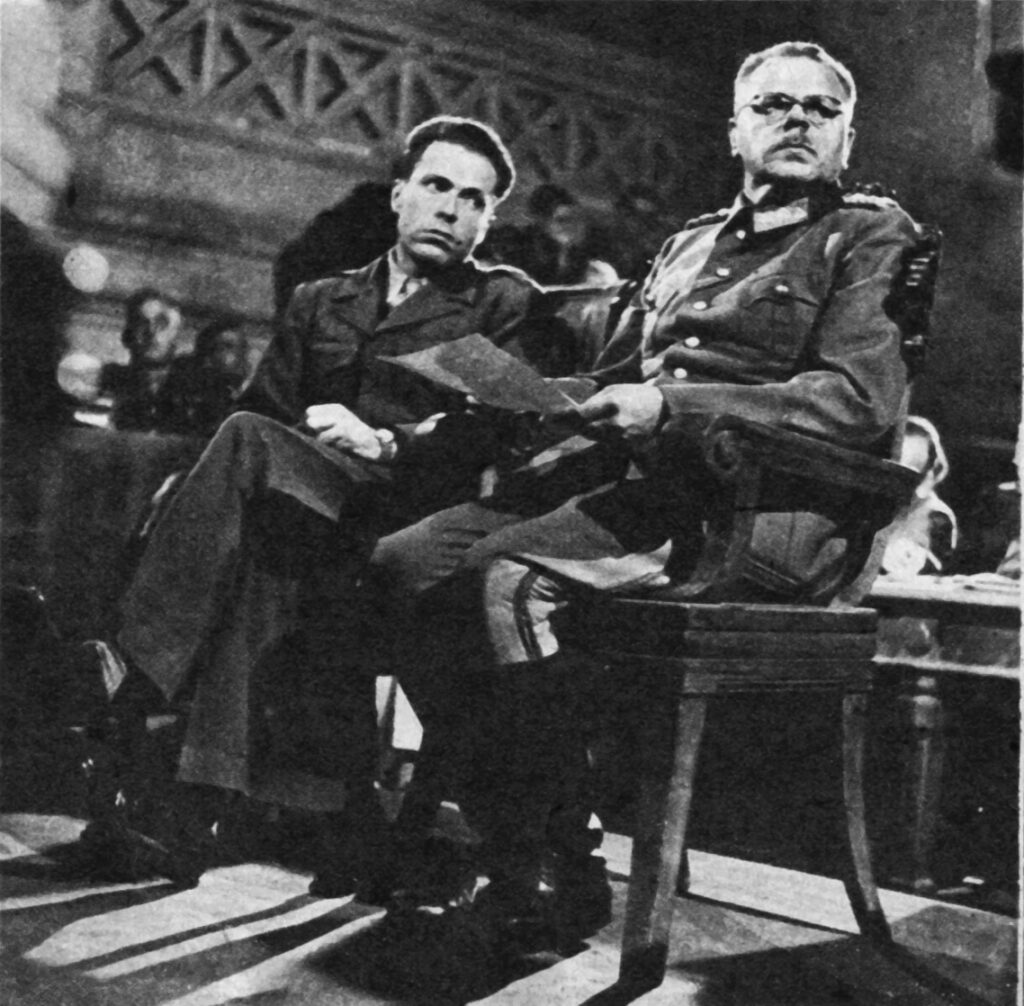Pillole di storia: domande e risposte per “rispolverare” un avvenimento tragico
English version here
Il 26 marzo 1944 i tedeschi fucilarono ad Ameglia (La Spezia)1 15 soldati statunitensi catturati nel corso di una missione di guerra.
Dopo 80 anni dall’eccidio ricordiamo brevemente l’episodio2, traducendo il testo, in omaggio alle vittime, anche in lingua inglese.
I soldati statunitensi erano3:
- Vincent Russo, di 28 anni, tenente US Army
- Paul J. Traficante, di 26 anni, tenente US Army
- Alfred L. De Flumeri, di 33 anni, sergente US Army
- Liberty J. Tremonte, di 24 anni, caporale tecnico US Army
- Joseph M. Farrell, di 22 anni, caporale tecnico US Army
- Salvatore DiSclafani, di 28 anni, caporale tecnico US Army
- Angelo Sirico, di 23 anni, caporale tecnico US Army
- Thomas N. Savino, di 29 anni, caporale tecnico US Army
- John J. Leone, di 22 anni, caporale tecnico US Army
- Joseph A. Libardi, caporale tecnico US Army
- Livio Visceli, di 28 anni, sergente tecnico US Army
- Dominick Mauro, di 27 anni, sergente US Army
- Joseph Noia, di 25 anni, sergente US Army
- Rosario Squatrito, di 22 anni, caporale tecnico US Army
- Santoro Calcara, di 24 anni, caporale tecnico US Army.
Come si chiamava la missione di guerra di cui i soldati erano stati incaricati, quando avvenne, da chi ebbero tale compito?
La missione si chiamava “Ginny II”4, avvenne in data 22 marzo 1944, su ordine dell’OSS5.
A quale reparto appartenevano i soldati statunitensi? Erano riconoscibili come soldati? Qual era il compito della loro missione?
I componenti del Commando appartenevano tutti all’US Army OSS 2677 Special Reconnaissance Regiment (Company D), vestivano tutti l’uniforme e dovevano interrompere, tra Bonassola e Framura, la linea ferroviaria, strategica per le comunicazioni tedesche e per i rifornimenti alla Linea Gustav.
Quando e con quale mezzo arrivarono? Come era stato programmato il loro arrivo e il loro rientro?
Arrivarono dalla Corsica, a bordo di motosiluranti6, nella notte del 22 marzo 1944, e, tramite tre gommoni, sbarcarono sulla spiaggia, tra Bonassola e Framura; dopo il sabotaggio, per il ritorno, da attuare sempre a bordo dei gommoni, sarebbero stati attesi dalle stesse motosiluranti.
Che cosa successe realmente?
Il punto di sbarco risultò diverso da quello previsto, e molto lontano dal punto del sabotaggio, i contatti “in loco” non si attivarono subito, le motosiluranti, che avrebbero dovuto all’occorrenza recuperare i soldati, non poterono farlo per sopravvenute difficoltà, ed essi dovettero nascondere, con problemi, tutto il loro materiale, compresi i gommoni, trovare un rifugio e, poiché non era previsto che rimanessero lì, cercare anche del cibo. Un ragazzo del luogo li aiutò ma, purtroppo, un altro abitante avvertì il posto di guardia fascista e i 15 militari statunitensi vennero fatti prigionieri.
Questo successe il 24 marzo 1944.
Che cosa accadde nell’intervallo di tempo tra la loro cattura e la fucilazione?
Brevemente interrogati a Bonassola, furono poi portati alla Spezia, dove subirono veri e propri interrogatori da parte di ufficiali tedeschi che sapevano la lingua inglese. Ciò avvenne a Carozzo, presso il Comando della 135° Brigata da Fortezza agli ordini del Colonnello Kurt Almers. Egli trasmise la notizia al suo superiore generale Anton Dostler del LXXV Corpo d’Armata. Dostler informò, a sua volta, il Comandante supremo tedesco in Italia, Feldmaresciallo Albert von Kesselring, ricevendo, secondo la testimonianza resa successivamente dallo stesso Dostler, l’ordine di fucilarli, sulla base dell’ordine del Führer per l’eliminazione dei Commando catturati dietro le linee. E così accadde, sebbene Kurt Almers avesse tentato, in data 25 marzo 1944, di far annullare a Dostler l’ordine di esecuzione.
Quando e dove avvenne la loro fucilazione?
I 15 militari statunitensi furono portati ad Ameglia, dove vennero fucilati in località Punta Bianca, all’alba di domenica 26 marzo 1944, senza alcun processo, forse alla presenza della popolazione, e poi sepolti in località isolata di quel territorio.
Dopo la guerra, qualcuno ha pagato per la loro morte?
Il Generale Anton Dostler fu processato a Caserta7 da un tribunale alleato per crimini di guerra e condannato a morte, sentenza eseguita mediante fucilazione ad Aversa il 1° dicembre 1945. Non fu possibile, in quel contesto, dimostrare la responsabilità di Albert von Kesselring riguardo ai fatti, sebbene, all’epoca di essi, egli si trovasse, come accertato in seguito, addirittura in Liguria.8
Note
1 Nel Comune di Ameglia esistono più targhe in memoria della fucilazione (luogo), del loro seppellimento (luogo) e una in ricordo dell’episodio (con tutti i nomi dei 15 soldati).
2 Numerosi sono coloro che si sono interessati all’eccidio nel corso degli anni. Tra essi, Maurizio Fiorillo, che compila la scheda “Episodio di Punta Bianca, Ameglia”; Giorgio Pagano, che scrive in data 3 aprile 2022 “Dalla Corsica a Punta Bianca. Il viaggio senza ritorno di 15 giovani” e “Kesserling e le menzogne sull’episodio degli americani a Punta Bianca” in “Ameglia informa”, maggio 2022 e seg..
Sia Maurizio Fiorillo che Giorgio Pagano indicano numerose fonti di appoggio.
Molto articolata e documentata, riguardo allo svolgersi della missione, cattura dei soldati, loro fucilazione e processo relativo alla loro uccisione, è anche la voce relativa su Wikipedia.
3 L’elenco è stato trascritto integralmente dalla Scheda di Maurizio Fiorillo (V. Nota 2).
4 L’impresa era stata già tentata, ma inutilmente, nella notte tra 27 e 28 febbraio 1944 (Missione “Ginny I”).
5 Office of Strategic Services.
6 PT 214 e PT 210
7 Il processo a Dostler viene ritenuto, giuridicamente, l’apripista per il processo di Norimberga.
8 Giorgio Pagano, riprendendo il libro di Sandro Antonini “Generali e burocrati nazisti in Italia:1943-1945” e il saggio “Kesserling, via Rasella e la ‘missione Ginny’” dello storico statunitense Richard Raiben, scrive un articolo sul fatto che, proprio nei giorni della strage, Kesserling era in Italia, anzi in Liguria, e il 24 marzo 1944, alle 10,45 alla Spezia.
It was the day of March 26th, 1944
(Translated by Tamara Corning and Valerio Martone)
Snippets of history: a few questions and answers to remember a tragic event.
On March 26th, 1944 German soldiers executed 15 American soldiers by firing squad after they were captured during a war mission.
Eighty years after the massacre, we revisit the episode and include the text in English as a tribute to the victims.
The American soldiers were:
- Vincent Russo, 28 years old, Lieutenant of the US Army
- Paul J. Traficante, 26 years old, Lieutenant of the US Army
- Alfred L. De Flumeri, 33 years old, Sergeant of the US Army
- Liberty J. Tremonte, 24 years old, Tech Corporal of the US Army
- Joseph M. Farrell, 22 years old, Tech Corporal of the US Army
- Salvatore DiSclafani, 28 years old, Tech Corporal of the US Army
- Angelo Sirico, 23 years old, Tech Corporal of the US Army
- Thomas N. Savino, 29 years old, Tech Corporal of the US Army
- John J. Leone, 22 years old, Tech Corporal of the US Army
- Joseph A. Libardi, Tech Corporal of the US Army
- Livio Visceli, 28 years old, Tech Corporal of the US Army
- Dominick Mauro, 27 years old, Sergeant of the US Army
- Joseph Noia, 25 years old, Sergeant of the US Army
- Rosario Squatrito, 22 years old, Tech Corporal of the US Army
- Santoro Calcara, 24 years old, Tech Corporal of the US Army.
What was the name of the war mission to which the soldiers were entrusted? When did it happen? Who gave them this duty?
The mission was called “Ginny II”. It occurred on March 22nd, 1944 under the OSS orders.
What was the military unit of the American soldiers? Were they recognizable as soldiers? What was the final goal of their mission?
All the men of the commando were part of the US Army OSS 2677 Special Reconnaissance Regiment (Company D). All of them wore a military uniform. Their final goal was to blow up the railway line between Bonassola and Framura, which was strategic for both German communications and their supply lines that reinforced the Gustav line.
When and how did they arrive? How was their arrival and return planned?
They arrived from Corsica during the night of March 22nd, 1944, using PT boats. They landed on the beach between Bonassola and Framura using three rubber dinghy boats. After the sabotage, the plan was to use the same means of transport to return.
What actually happened?
They landed in a different place than they had intended to, which was very far from the point of the sabotage. Due to this error, the local contacts did not come to action immediatly. Causing further complications, the PT boats, which the soldiers should have used for their return, couldn’t recover them because of unexpected difficulties. At this point, the American soldiers weren’t where they were supposed to be, so they had to hide all their equipment and find refuge and food. They found help from a local boy, but unfortunately another local inhabitant notified their presence to the local fascist guard post and the 15 American soldiers were taken as prisoners. All of this happened on March 24th, 1944.
What happended in the time between being captured and their executed by firing squad?
After being briefly questioned in Bonassola, they were brought to La Spezia, where they were interrogated by English speaking German officers. This took place in Carozzo, at the command post of the 135th Fortress Brigade, under the command of Colonel Kurt Almers. Almers informed his superior in command, the General of the LXXV army corps, Anton Dostler who in turn informed the supreme German commander in Italy, General Field Marshal Albert von Kesserling. According to the testimony later released by Dostler himself, it was von Kesserling who gave the execution orders, as ordered by the Führer himself for the enemy commandoes caughts behind the lines. Despite the efforts of Kurt Almers to cancel the execution orders on March 25th, 1944, it became a reality.
When and where they were executed?
The 15 American soldiers were brought to Ameglia, where they were executed by firing squad near Punta Bianca, at dawn on Sunday, March 26th, 1944, without a trial, perhaps in the presence of the local citizens, and then buried in an isolated location in the area.
After the war, did anybody pay for their death?
General Anton Dostler was tried in an Allied war trial in Caserta for war crimes and sentenced to death. The sentence was carried out by firing squad in Aversa, on December 1st, 1945. Despite the fact that it was later verified he was in Liguria at the time everything happened, in 1945 it was not possible for the courts to prove any responsibility on the part of Albert von Kesserling.
Note: see the original text in Italian for the bibliography.




